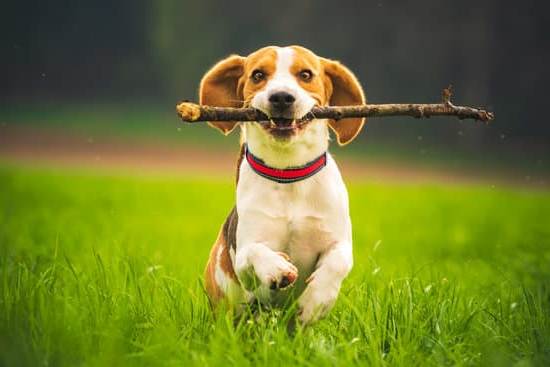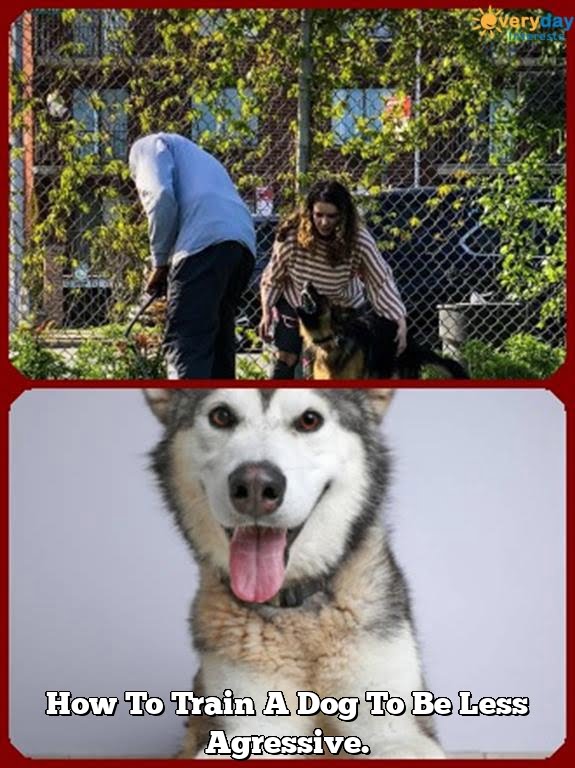Dogs are known for their loyalty and protective nature, but sometimes their territorial behavior can become problematic. If your dog is showing signs of aggression or possessiveness over its space, it is crucial to address this issue before it escalates. In this article, we will provide you with effective techniques to train your dog to be less territorial.
Territory is an instinctual concept for dogs that dates back to their ancestors in the wild. Understanding how dogs perceive and value their territory is essential in addressing this behavior. By recognizing the importance of a dog’s territory, we can begin to unravel why they exhibit territorial behavior and find ways to modify it.
Before diving into training methods, it is crucial to identify the signs of territorial behavior in your dog. This understanding will help you gauge the severity of the issue and determine the most appropriate approach for training. From growling and barking at strangers to guarding specific areas within your home, these behaviors indicate that your dog may be feeling threatened or possessive.
In the following sections, we will explore common triggers that cause territorial behavior in dogs, as well as techniques for creating a calming environment conducive to training. From basic obedience exercises to desensitization and counter-conditioning methods, we will provide step-by-step guidance on modifying your dog’s response and reinforcing positive behaviors.
Remember, patience and consistency are key when it comes to training a dog. While some cases may require professional assistance, most territorial issues can be successfully addressed through proper training techniques. By implementing these methods with dedication and persistence, you can cultivate a harmonious relationship with your furry friend while ensuring everyone’s safety and peace of mind.
Signs of Territorial Behavior in Dogs
Recognizing the signs of territorial behavior in dogs is crucial for identifying and addressing the problem. By understanding the specific behaviors that indicate territoriality, dog owners can take appropriate steps to train their pets and prevent potential aggression. Here are some common signs of territorial behavior in dogs:
- Excessive Barking: Dogs that exhibit territorial behavior often bark excessively to warn intruders or perceived threats to stay away from their territory. This barking can be triggered by people or animals approaching the property or invading their personal space.
- Growling and Snapping: When a dog feels threatened by an unfamiliar person or animal encroaching on their territory, they may growl and snap as a way of defending their space. This behavior is meant to intimidate and establish boundaries.
- Guarding Possessions: Dogs with territorial tendencies may guard their possessions, such as toys, food bowls, or resting spots, to assert ownership over these items. They may become possessive and defensive if anyone tries to take them away.
- Urine Marking: One common sign of territorial behavior is urine marking, where dogs urinate in various areas around their territory as a way of communicating ownership. This behavior is more prevalent among male dogs but can occur in females as well.
- Body Language Cues: Territorial dogs often display certain body language cues that indicate their protective instincts kicking in. These can include stiff posture, raised hackles (hair along the back), erect ears, direct eye contact, and a tense overall demeanor.
By being aware of these signs, owners can identify if their dog has developed territorial behavior patterns and address them early on through training techniques discussed later in this article.
| Signs | Description |
|---|---|
| Excessive Barking | Dogs bark excessively to warn intruders or perceived threats to stay away from their territory. |
| Growling and Snapping | Dogs growl and snap when they feel threatened by unfamiliar people or animals encroaching on their territory. |
| Guarding Possessions | Dogs guard their possessions, such as toys or resting spots, to assert ownership over these items. |
| Urine Marking | Dogs mark their territory by urinating in various areas as a way of communicating ownership. |
| Body Language Cues | Territorial dogs display body language cues like stiff posture, raised hackles, erect ears, direct eye contact, and tense overall demeanor. |
Common Causes of Territorial Behavior
Territorial behavior in dogs can arise from a variety of triggers, and understanding these underlying causes is crucial in addressing and managing your dog’s territorial tendencies. By uncovering the triggers of your dog’s territorial behavior, you can better address the issue and help your furry friend become less territorial.
One common cause of territorial behavior is fear. Dogs may become territorial when they feel intimidated or threatened by unfamiliar people or animals entering their perceived territory. This fear-based response stems from their instinct to protect themselves and their surroundings. It is important to identify the situations that trigger fear in your dog, such as encounters with strangers or visits from other animals, so that you can address them during training sessions.
Another possible cause of territorial behavior is lack of socialization. Dogs that have not been exposed to various environments, people, and animals during their critical development stages may have a harder time adjusting to new situations and tend to display more territorial behavior. Socialization plays a significant role in helping dogs develop confidence and adaptability, so it is essential to expose your dog to different experiences and stimuli at an early age.
Additionally, previous negative experiences can contribute to territorial behavior in dogs. If your dog has had a traumatic encounter with another animal or person in their perceived territory, they may exhibit protective behaviors as a way to prevent similar incidents from occurring again. Identifying any past traumas or negative incidents that may have influenced your dog’s territorial behavior can help you tailor training methods specific to their needs.
Understanding the common causes of your dog’s territorial behavior is an essential step towards addressing this issue effectively. By identifying the triggers behind their protective instincts, you can incorporate appropriate training techniques into their routine for long-term success.
Remember that each dog is unique, so it may be helpful to consult a professional dog trainer who can provide personalized guidance based on your specific situation. With patience, consistency, and the right approach, you can help your dog become less territorial and create a happier and more harmonious environment for both of you.
Creating a Calming Environment
Creating a calm environment is crucial when it comes to training a dog to be less territorial. By ensuring that your dog feels safe and secure in their surroundings, you can set the stage for successful training sessions. Here are some tips on how to create a calming environment for your dog:
- Designate a Safe Space: Dogs need their own quiet place where they can retreat to when they feel anxious or overwhelmed. This could be a crate, a bed in a secluded area, or even a cozy corner of the house. Make sure this space is comfortable and filled with familiar items such as their favorite toys or blankets.
- Use Calming Scents: Certain scents have been found to have a calming effect on dogs, such as lavender or chamomile. You can use essential oils or sprays specifically designed for dogs to create a soothing atmosphere. Be careful not to overwhelm your dog with strong smells and always consult with your veterinarian before using any new products.
- Minimize Outside Stimuli: Dogs that display territorial behavior are often triggered by external stimuli such as people passing by the windows or other animals in the vicinity. Close the curtains or blinds to prevent your dog from constantly monitoring their surroundings and getting worked up over every little movement outside.
- Establish Clear Rules and Boundaries: Dogs thrive on structure and routine, so it’s important to establish clear rules and boundaries within your home. Provide consistent routines for feeding, walks, and playtime, and make sure everyone in the household is on board with enforcing these rules.
- Create Positive Associations: Introduce positive experiences in areas where your dog displays territorial behavior. For example, if they tend to bark at people walking by the fence, you can toss treats in that direction whenever someone passes by without causing any negative reactions from your dog.
By creating a calming environment for your dog, you are setting them up for success during training sessions aimed at reducing territorial behavior. Remember to be patient and consistent with your approach, as it may take time for your dog to unlearn their territorial habits. With the right techniques and a calm environment, you can help your dog become more relaxed and less territorial in the long run.
Basic Obedience Training
Basic obedience training is an essential step in establishing trust and respect between you and your dog. By teaching your dog basic commands, you are setting a foundation for communication and building a stronger bond with your pet. This section will outline some key aspects of basic obedience training that can help in reducing territorial behavior.
Start with the Basics: Sit, Stay, Come
One of the first commands to teach your dog is “sit.” This command not only helps establish control but also serves as a helpful tool to redirect their attention when they start displaying territorial behavior.
Once your dog has mastered the sit command, you can move on to other basic commands like “stay” and “come.” These commands are particularly important for managing your dog’s behavior in situations where they may become territorial, such as when guests arrive at your home.
Consistency is Key
Consistency is crucial when it comes to obedience training. Make sure that everyone in your household uses the same commands and techniques so that confusion is minimized for your dog. Use positive reinforcement, such as treats or praise, whenever your dog successfully follows a command. This positive reinforcement will motivate them to continue obeying and reinforce the trust and respect between you and your furry friend.
Patience and Persistence
Training takes time, especially when it comes to reducing territorial behavior. It’s important to be patient with your dog during this process and understand that progress may be slow at times. Consistently reinforce boundaries and redirect their attention whenever they display territorial tendencies. With persistence and patience, you will begin to see improvements in their behavior over time.
By focusing on establishing trust through basic obedience training, you can effectively address territorial behavior in your dog. Remember, every dog is different, so tailor the training methods to suit their personality and needs. With consistency, patience, and positive reinforcement, you can set the stage for a happier, less territorial pup.
Desensitizing Your Dog to Stimuli
When training your dog to be less territorial, one crucial step is desensitizing them to stimuli. This process involves gradually exposing your dog to the triggers that cause their territorial behavior in order to reduce their anxiety and reactivity. Through controlled exposure and positive reinforcement, you can help your dog develop a more relaxed response and decrease their territorial tendencies.
Understanding gradual exposure
Gradual exposure is an essential technique in desensitizing your dog to stimuli. It involves introducing your dog to situations or objects that trigger their territorial behavior in a controlled and gradual manner. The idea behind this approach is to expose your dog to these triggers at a level they can handle without becoming excessively anxious or reactive.
Begin by identifying the specific triggers that cause your dog’s territorial behavior, such as strange dogs passing by the house or visitors entering their designated space. Once you have identified these triggers, create a plan that gradually exposes your dog to them under controlled circumstances.
Creating a desensitization plan
To create an effective desensitization plan, start by determining the distance or intensity at which your dog begins reacting territorially. This will establish a baseline for what level of exposure is currently manageable for them.
Using this baseline, create levels of exposure starting from below their threshold and gradually increasing until they become comfortable with the trigger. For example, if your dog reacts aggressively when visitors come into the house, start by having someone stand outside where your dog can see them but not reach them. As your dog becomes more comfortable with this level of exposure, gradually move closer until they can tolerate guests entering the house without displaying territorial behavior.
Patience and consistency
Desensitizing your dog is not an overnight process; it requires patience and consistency on your part. Make sure to follow the desensitization plan consistently, gradually increasing the exposure level only when your dog is comfortable and relaxed at the current level.
It’s important to note that every dog progresses at their own pace, so be prepared for setbacks along the way. If your dog shows signs of stress or becomes reactive, take a step back in the exposure process and give them more time to adjust.
By using gradual exposure and reinforcing positive behavior, you can help your dog become less territorial over time. Remember to remain patient, consistent, and seek professional help if needed. With dedication and persistence, you can create a calm environment for your dog and reduce their territorial behavior.
Counter-Conditioning Techniques
Counter-conditioning techniques can be an effective way to change your dog’s response to territorial behavior. The goal of counter-conditioning is to replace the negative association or response that your dog has with certain stimuli with a positive one. By doing so, you can help your dog become less territorial and more comfortable in his environment.
One common counter-conditioning technique is known as “desensitization.” Desensitization involves exposing your dog to the stimuli that trigger his territorial behavior, but at a very low intensity or from a safe distance. This gradual exposure allows your dog to become more familiar and comfortable with the trigger without feeling threatened or compelled to act territorially.
To desensitize your dog, it is important to start at a level where he does not react negatively. For example, if your dog becomes territorial when someone approaches the front door, you could begin by having someone stand far away from the door.
Slowly decrease the distance between the person and the door over time as long as your dog remains calm and relaxed. It may take several sessions for your dog to feel comfortable at each new level of exposure.
Another counter-conditioning technique that can be useful is called “reward-based training.” This involves rewarding your dog whenever he exhibits non-territorial behavior or responds positively to the trigger stimulus. You can use treats, praise, or playtime as rewards depending on what motivates and reinforces your specific dog. Through positive reinforcement, you are teaching your dog that good things happen when he behaves calmly rather than acting territorially.
It is important to note that counter-conditioning takes time and patience. Consistency is key in order for it to be effective. It is also crucial to only expose your dog to triggers at a level he can handle without becoming anxious or aggressive.
If you find that despite consistent training efforts, your dog’s territorial behavior persists or worsens, it may be necessary to seek professional help from a dog trainer or behaviorist who specializes in counter-conditioning techniques. Remember that every dog is unique, and what works for one may not work for another, so it is essential to tailor your training approach to suit your dog’s individual needs.
Reinforcement and Rewards
When training your dog to be less territorial, one of the most effective methods is through positive reinforcement. Positive reinforcement involves rewarding your dog for exhibiting behavior that you want to encourage. This approach not only helps your dog understand what is expected of them, but it also strengthens the bond between you and your furry friend.
To begin using positive reinforcement, start by identifying behaviors that are incompatible with territorial behavior. For example, when guests enter your home, instruct your dog to sit or lay down on their mat. When they comply with these commands, reward them with praise, a treat, or a favorite toy. By doing this consistently, your dog will associate the presence of guests with positive experiences rather than feelings of protectiveness.
Another helpful technique is to use clicker training during obedience exercises. Clicker training involves using a clicking sound paired with a treat to mark desired behavior in real-time. For instance, if you are training your dog to “stay” while someone enters the house, click and treat as soon as they remain in position without growling or barking. Over time, your dog will learn that silence and calmness result in rewards.
In addition to rewards for good behavior, it is important to avoid punishing your dog for being territorial. Punishment can create fear or anxiety in dogs and may worsen their territorial tendencies. Instead, focus on redirecting their attention towards alternative behaviors when they show signs of aggression or protectiveness. Redirecting their attention could involve giving them a toy or engaging them in a game of fetch.
Remember that consistency and patience are key when using positive reinforcement methods. Training takes time and effort, so don’t expect instant changes in your dog’s behavior. Stay consistent with the techniques you employ and provide rewards consistently over an extended period of time.
By utilizing positive reinforcement methods consistently and patiently working with your dog, you can help reduce their territorial behavior and create a more harmonious home environment. With time and practice, your dog will learn that good behavior is rewarded, ultimately leading to a happier and less territorial furry companion.
Seeking Professional Help
Training your dog to be less territorial can be a challenging process, and sometimes it may be necessary to seek professional help. A dog trainer is an expert who can provide guidance and support in modifying your dog’s behavior. Knowing when to consult a dog trainer can greatly improve the effectiveness of your training efforts and ensure the safety and well-being of both you and your pet.
There are several situations in which it is advisable to seek assistance from a professional dog trainer. If you have tried various training techniques without success or if your dog’s territorial behavior is becoming increasingly aggressive, consulting a trainer is a wise decision. Additionally, if you don’t have the time or patience to devote to consistent training sessions, a trainer can provide the necessary structure and expertise.
When choosing a dog trainer, it is important to consider their experience and qualifications. Look for trainers who specialize in behavior modification or have specific expertise in dealing with territorial dogs. It is also helpful to read reviews or ask for recommendations from other dog owners who have successfully worked with a particular trainer.
| Situations | Indications |
|---|---|
| Various training techniques unsuccessful | Your previous attempts at training have not yielded positive results. |
| Increasingly aggressive behavior | Your dog’s territorial behavior is escalating and poses a safety risk. |
| Lack of time or patience | You are unable to commit consistent effort and attention required for effective training. |
Overall, seeking professional help from a qualified and experienced dog trainer can greatly enhance your chances of successfully modifying your dog’s territorial behavior. With their expertise and guidance, you can create a safe and harmonious environment for both you and your furry companion. Remember, choosing the right trainer is crucial, so take the time to research and find one who understands your specific needs and goals.
Maintaining Consistency and Patience
Creating lasting change in your dog’s territorial behavior requires consistency and patience. It is important to remember that this process takes time and effort, but with dedication, you can successfully train your dog to be less territorial.
Consistency is crucial throughout the entire training process. This means being consistent with your expectations, commands, and reactions. Make sure all family members are on the same page and are using the same techniques and cues when interacting with your dog. Inconsistency can confuse your dog and hinder their progress. Stick to a regular routine, provide clear boundaries, and reinforce positive behaviors consistently.
Patience is also key when training a territorial dog. Each dog progresses at their own pace, so be prepared for setbacks and slow progress. Training requires repetition, reinforcement, and time for your dog to understand what is expected of them. Avoid becoming frustrated or angry when things don’t go as planned – this can create anxiety in your dog and make the training process even more challenging.
As you work towards overcoming territorial behavior in your dog, continue to stay committed to providing a calm environment that fosters trust and respect. Consistently reinforce positive behaviors through rewards and praise, while redirecting any inappropriate behavior. Remember that desensitization is a gradual process – take small steps and build up gradually to more challenging situations.
In some cases, seeking professional help from a certified dog trainer may be necessary especially if you are facing difficulties in addressing your dog’s territorial behavior on your own. A professional trainer can provide specialized guidance tailored to your specific situation.
By maintaining consistency in training methods, being patient with both yourself and your furry friend, seeking professional help if needed,and staying committed to the journey of training, you will see lasting success in reducing territorial behavior in your beloved canine companion. With time, effort,and persistence,your once territorial pup will become more relaxed,content,and sociable with others.
Frequently Asked Questions
What causes territorial behavior in dogs?
Territorial behavior in dogs is primarily caused by an instinctual drive to protect their perceived territory or resources. Dogs naturally have a strong sense of ownership over their space and belongings, which can be exacerbated by fear, insecurity, or a lack of socialization.
This behavior may manifest as aggressive displays such as growling, barking, lunging, or even biting towards other dogs or people who approach their territory.
How do I stop my dog from being territorial with my other dog?
To stop your dog from being territorial with your other dog, it’s important to address the underlying causes and gradually change their perception of their territory and resources. One key approach is to gradually desensitize and counter-condition them through controlled introductions in neutral territories where they don’t feel the need to defend.
Gradually increase positive interactions between the dogs while providing rewards for calm and non-aggressive behavior. It’s also crucial to ensure both dogs are receiving equal attention, affection, and resources to avoid triggering competition or feelings of resource guarding.
How do I train my dog to be less dog aggressive?
Training a dog to be less dog aggressive requires patience, consistency, and positive reinforcement techniques. Start by identifying the triggers that cause aggression in your dog, such as specific situations or certain types of dogs.
Begin training in a controlled environment using neutral or non-threatening dogs while keeping them at a distance where your dog remains calm and relaxed. Gradually decrease this distance over successive sessions while rewarding your dog for remaining calm and non-reactive.

Welcome to the blog! I am a professional dog trainer and have been working with dogs for many years. In this blog, I will be discussing various topics related to dog training, including tips, tricks, and advice. I hope you find this information helpful and informative. Thanks for reading!





